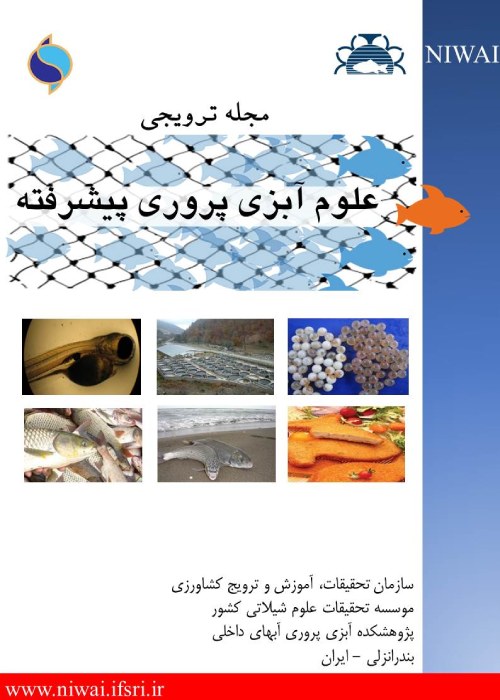Aflatoxin and its risk management in aquaculture
Author(s):
Article Type:
Research/Original Article (بدون رتبه معتبر)
Abstract:
Seafood consumption is increased mainly due to its availability, nutritional value, health benefits, reasonable price in comparison to livestock and poultry and finally lack of fatal diseases such as BSE (bovine spongiform encephalopathy) and FMD (foot and mouth disease) risk. Food contamination with mycotoxins is a serious setback to animal health and performance with subsequent health issues to animal protein product consumers. Mycotoxins are secondary fungal metabolites with different chemical charactristics and physiological effects. It is estimated that 25% of the world's agricultural products are annually affected and practically become useless. Aflatoxins are a group of mycotoxins with carcinogenic and immunosuppressive effects. Aflatoxins can transfer to body through food/feed and also via inhalation. Human and animal food/feed ingredients are susceptible to fungal colonization and growth. Aflatoxins are mainly produced by fungi species such as Aspergillus flavus and A. parasiticus. They concentrate in various tissues including liver, kidney, immune system, genital organs, nervous system and gastrointestinal tract. Certainly, they are considerably accumulated in the liver, for instance the hepatic concenteration of aflatoxin would be 10 times higher that its mascular concentration. Various risk management approaches have been proposed to deal with mycotoxins expecially aflatoxin contamination of feed ingredients, mainly including at-harvest and post harvest managemnets. In at-harvest method mostly avoiding insect damage, choosing varieties resistant to fungal diseases and well-adapted to growing area and biological control are addressed. However, avoiding delayed harvest, avoiding grain kernel damage, grain sorting, managing temperature and humidity of silos and ozone treatment and etc. are mainly considered in post harvest management of feed ingredients . This review summarizes the management strategies for preventing the toxicity of aflatoxin in aquaculture along with reviewing existing literature on the toxicity of aflatoxin in aquaculture animal and other monogastric animals expecially poltury.
Keywords:
Language:
Persian
Published:
Advanced Aquaculture Science Journal, Volume:2 Issue: 4, 2018
Pages:
55 to 69
magiran.com/p2366028
دانلود و مطالعه متن این مقاله با یکی از روشهای زیر امکان پذیر است:
اشتراک شخصی
با عضویت و پرداخت آنلاین حق اشتراک یکساله به مبلغ 1,390,000ريال میتوانید 70 عنوان مطلب دانلود کنید!
اشتراک سازمانی
به کتابخانه دانشگاه یا محل کار خود پیشنهاد کنید تا اشتراک سازمانی این پایگاه را برای دسترسی نامحدود همه کاربران به متن مطالب تهیه نمایند!
توجه!
- حق عضویت دریافتی صرف حمایت از نشریات عضو و نگهداری، تکمیل و توسعه مگیران میشود.
- پرداخت حق اشتراک و دانلود مقالات اجازه بازنشر آن در سایر رسانههای چاپی و دیجیتال را به کاربر نمیدهد.
In order to view content subscription is required
Personal subscription
Subscribe magiran.com for 70 € euros via PayPal and download 70 articles during a year.
Organization subscription
Please contact us to subscribe your university or library for unlimited access!



